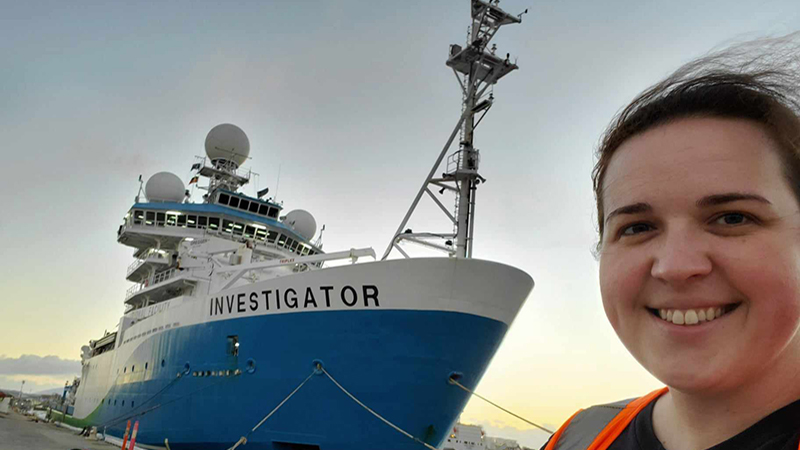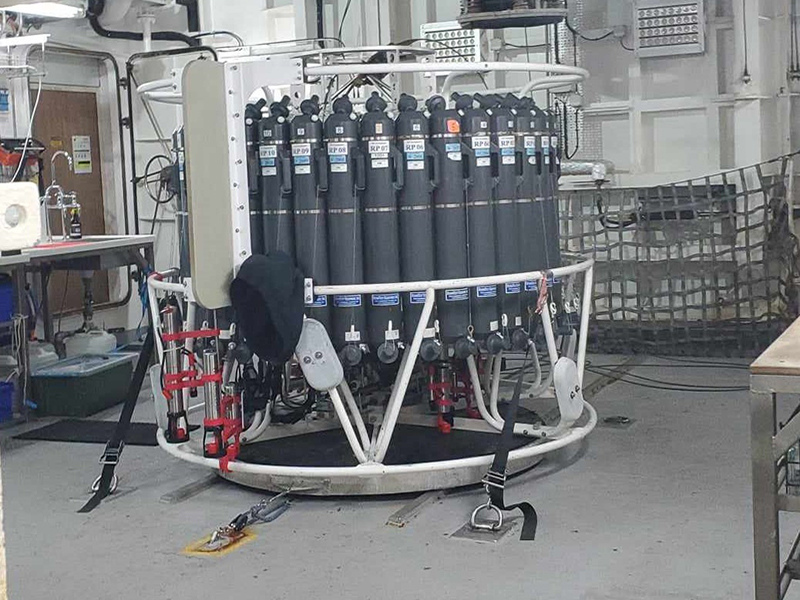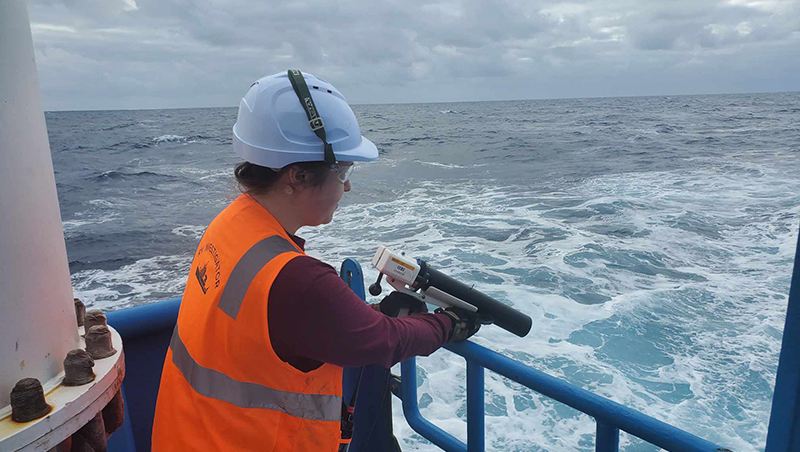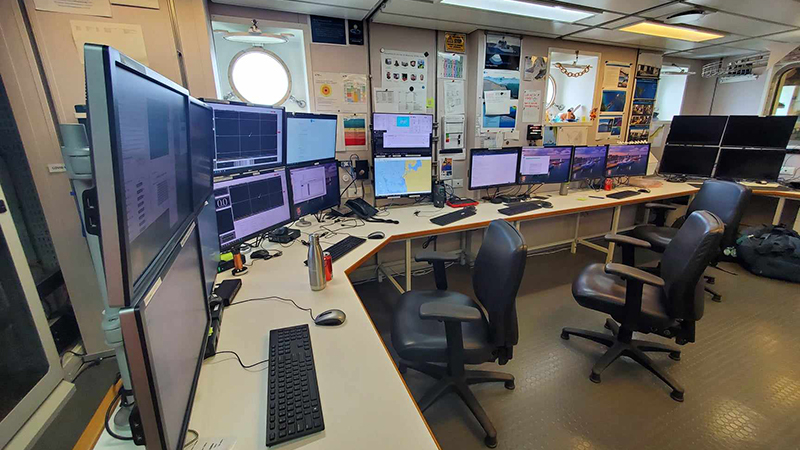U.S.-Australia Collaboration To Advance Ocean Research

Amanda Finn in front of the Commonwealth Scientific and Industrial Research Organisation (CSIRO)’s Research Vessel Investigator prior to the start of her 11-day transit voyage. Image courtesy of Amanda Finn - NOAA. Download largest version (312 KB).
Amanda Finn, a physical scientist with NOAA’s Office of Coast Survey, is sailing on an 11-day voyage on Research Vessel Investigator, operated by the Commonwealth Scientific and Industrial Research Organisation (CSIRO) , Australia’s national science agency. Her participation in the expedition is part of a partnership between NOAA, CSIRO, and Geoscience Australia to cooperate in ocean exploration and mapping, formalized by the signing of the Memorandum of Understanding in 2022.
The current voyage began on March 9 in Fremantle, Western Australia, and will conclude on March 20 in Hobart, Tasmania. A main objective of this transit voyage is to relocate R/V Investigator in preparation for its next research voyage, and while underway, participants will conduct various research projects, and undertake outreach, familiarization and training activities.

The CTD (conductivity, temperature, and depth) rosette on the deck of Research Vessel Investigator. A CTD is an important tool for measuring chemical and physical properties of the water column. CTD data is also important in acquiring sound velocity profiles of the water column to apply to multibeam sonar or other sonar data for accuracy of bathymetry measurements. Image courtesy of Amanda Finn - NOAA. Download largest version (400 KB).

Amanda Finn deploys an XBT or expendable bathythermograph during a voyage on Research Vessel Investigator. These small torpedo-shaped probes are used to collect ocean temperature data, generating temperature profiles that play an important role in multibeam mapping operations. Image courtesy of Amanda Finn - NOAA. Download largest version (592 KB).
During the voyage, Amanda is working with CSIRO’s Geophysical Survey and Mapping team to learn about the survey systems and data acquisition/processing methods used on R/V Investigator, collaborating with scientists and surveyors from from the CSIRO Marine National Facility to share trade industry knowledge on seafloor mapping techniques. NOAA and CSIRO hope that this exchange will foster a U.S.-Australian partnership along with Geoscience Australia and facilitate future collaboration between Australian and U.S. scientific agencies. Amanda’s participation highlights the importance of the partnership between the United States and Australia in allowing experts to work together to share knowledge, expertise, and resources to open new frontiers in ocean research.

A view of the operations room on Research Vessel Investigator, operated by the Commonwealth Scientific and Industrial Research Organisation (CSIRO), Australia’s national science agency. Image courtesy of Amanda Finn - NOAA. Download largest version (536 KB).
Meet Amanda
Amanda is a physical scientist at NOAA’s Office of Coast Survey’s Atlantic Hydrographic Branch based in Norfolk, Virginia. After graduating from the University of Connecticut with a Bachelor of Science in Geosciences and Oceanography, she was hired onboard NOAA Ship Rainier as a hydrographic assistant survey technician. She spent the following three years sailing and surveying around the U.S. West Coast, including several trips to Alaska and Hawai’i, and finished her time on Rainier as a hydrographic senior survey technician. Amanda has been working at the Atlantic Hydrographic Branch since her departure from Rainier in the fall of 2020 and continues to participate in hydrographic voyages within NOAA’s fleet during the field season.
To learn more about the voyage and to follow along, visit: https://www.csiro.au/en/about/facilities-collections/MNF/Voyages-schedules/Voyages/2024/March/IN2024_T01
Published March 19, 2024